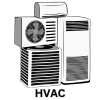
In this article:
Are new diesel vehicles fuel-efficient?
Yes — new diesel vehicles are still among the most fuel-efficient options, especially in the heavy-duty and long-haul segments where efficiency matters most.
Here’s a breakdown:
1. Fuel Efficiency in Modern Diesels
- Passenger cars (where still sold): Modern diesels often achieve 15–25% better fuel economy than equivalent gasoline cars, thanks to higher compression ratios and lean combustion.
- Light commercial vehicles (LCVs): Vans and pickups with diesels can get 25–30 mpg (US) or more under real-world conditions.
- Heavy-duty trucks and buses: State-of-the-art diesels reach 40–46% brake thermal efficiency (BTE), and some experimental designs (like opposed-piston diesels) are approaching 50%. For comparison, gasoline engines usually operate at 25–35% BTE.
2. Why New Diesels Are More Efficient
- High-pressure common rail injection → finer atomization, better mixing.
- Turbocharging with intercooling → more complete combustion, less pumping loss.
- Variable geometry turbos (VGTs) → maintain efficiency across load ranges.
- Friction reduction → low-friction coatings, optimized bearings.
- Downspeeding → engines designed to run at lower RPMs while delivering high torque.
- Smart engine management → adaptive fuel injection, cylinder deactivation, predictive controls.
3. Trade-offs
- Emissions controls (like DPFs and SCR systems) can slightly reduce efficiency due to added backpressure and urea (DEF/AdBlue) usage.
- Urban driving reduces diesel’s advantage, since frequent cold starts and low loads don’t favor compression ignition.
- Maintenance requirements are higher — clogged injectors, filters, or DPFs can quickly erode efficiency.
4. Real-World Picture
- For highway freight, diesels remain the most efficient and cost-effective option today.
- For city delivery and passenger cars, hybrid gasoline and electric powertrains are catching up or surpassing diesels in efficiency (especially in stop-and-go driving).
- Future designs (opposed-piston diesels, hybrid diesel-electric systems, renewable fuels like HVO) could push efficiency and sustainability even further.
How diesel engine are fuel efficient?
1. Higher Compression Ratio
- Diesel engines typically run at 14:1 to 22:1 compression ratios (vs. 8:1–12:1 for gasoline).
- Higher compression = higher combustion temperature and pressure → better thermal efficiency.
- This means they extract more usable energy from the same amount of fuel.
2. Lean Burn Operation
- Diesels use excess air (lean mixtures) instead of being limited to near-stoichiometric ratios like gasoline engines.
- More air + less throttling = lower pumping losses and more complete fuel utilization.
3. No Throttle Losses
- Gasoline engines use a throttle plate to control airflow → creates pumping resistance at partial load.
- Diesels control power by adjusting fuel injection only, so intake air is unrestricted.
- This greatly improves part-load efficiency (important for trucks cruising on highways).
4. High Energy Density of Diesel Fuel
- Diesel fuel contains ~10–15% more energy per liter than gasoline.
- Combined with better combustion efficiency, this leads to higher miles per gallon (mpg) or lower liters per 100 km (L/100 km).
5. Turbocharging & Direct Injection
- Modern diesels nearly always use turbochargers + intercoolers, increasing air density and improving combustion.
- High-pressure direct injection ensures fine atomization of fuel → more complete burn → higher efficiency.
🔹 6. Operating Range (Torque vs. RPM)
- Diesels make high torque at low RPM, allowing them to “downspeed” (run at lower engine speeds).
- Lower RPM = less friction and lower fuel consumption for the same work.
🔹 7. Durability & Load Optimization
- Heavy-duty diesels are designed to operate at their sweet spot (around 40–45% efficiency) for long periods (e.g., trucks on highways).
- Gasoline engines often operate under varying loads, which lowers average efficiency.
✅ Bottom line:
Yes — new diesel vehicles are still very fuel-efficient, particularly for long-distance, high-load applications. Their advantage is shrinking in light-duty cars due to advances in hybrids and electrics, but in heavy-duty transport, they remain the benchmark.
Other courses:



